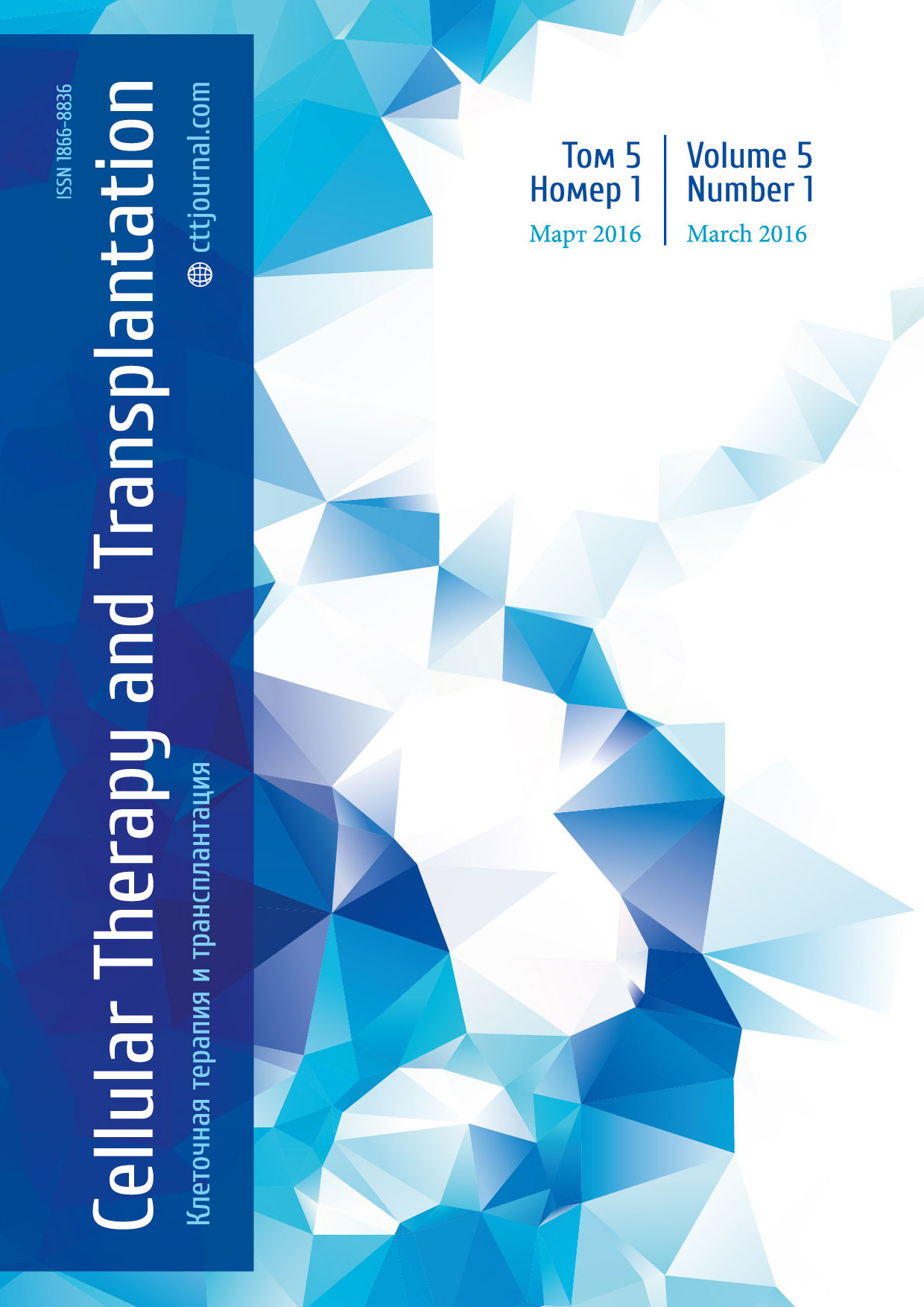Allogeneic stem cell transplantation in myelofibrosis patients with intermediate-2 and high DIPSSplus risk
Maria V. Barabanshikova, Elena V. Morozova, Vadim V. Baikov, Ludmila S. Zubarovskaya, Boris V. Afanasyev
Raisa Gorbacheva Memorial Institute of Children’s Oncology, Hematology and Transplantation
First I. Pavlov State Medical University of St. Petersburg, Russia
Summary
Introduction
Myelofibrosis (MF) is BCR-ABL–negative myeloproliferative disorder with progressive clinical course and usually poor prognosis. Current therapeutic options for patients with MF do not demonstrate a significant impact upon the disease course. Allogeneic stem cell transplantation (alloHSCT) is currently the only treatment option with curative potential in patients with MF, especially in case of intermediate and high risk categories. Patients and methods. We analyzed the results of alloHSCT in 10 patients aged 30 to 49 (a median of 41) years. 3 patients were diagnosed with post-PV (Polycythemia Vera) myelofibrosis; 7, with primary myelofibrosis. According to the DIPSSplus score, three patients belonged to intermediate-risk group (2 points), and five patients had a high-risk disease. Two patients received alloHSCT for MF in blast phase. Five patients were positive for JAK2V617F mutation before alloHSCT; one patient had a calreticulin (CALR) mutation. Two patients were pretreated with ruxolitinib for 4 and 6 months, respectively. One patient experienced stabilization and the other, disease progression. A reduced intensity conditioning regimen (fludarabine 180 mg/m2 plus busulfan 8 mg/kg, or FLAMSABu 8 mg/kg) followed by alloHSCT from related (3) and unrelated donors (7) was performed. 7 patients with unrelated donors received ATGAM (lymphocyte immune globulin). Graft-versus-host prophylaxis was performed with Tacrolimus/ Methotrexate in eight patients, Tacrolimus/ Mycophenolate, in one patient, and Cyclosporine A/ Methotrexate, in two cases. The hematopoietic stem cell (HSC) sources were either G-CSF-mobilized peripheral blood progenitor cells for five patients, and bone marrow in five other cases. Median number of CD34+cells was 4,3 × 106 (1,95 – 8,0) per kg weight. Results. Primary HSC engraftment was documented in 8 of 10 patients. One patient developed acute GVHD on day 86 after transplantation, one patient, chronic GVHD, one patient, disease progression. Bone marrow fibrosis regression, development of full donor chimerism, and JAK2V617F-negativity were achieved in four patients after HSCT (Fig. 1). One-year overall survival was 46,7% (Fig. 2).
Conclusion
AlloHSCT is effective treatment modality for myelofibrosis. Patient- and disease- related factors should be taken into account in deciding the optimal time to consider alloHCT in order to gain the greatest benefit to the patient from such a high-risk procedure. Pretransplant JAK2-inhibitors administration may have beneficial effect on the transplant outcome.

Figure 1. Bone marrow fibrosis before alloHSCT. Collagen fibrosis grade 3, megakaryocyte proliferation with cluster formation (a).
Bone marrow histology day 365 after transplantation. Normal megakaryocytes. No sings of bone marrow fibrosis. Magnification X 400. H&E (b).

Fig. 2. Overall survival in patients with myelofibrosis after alloHSCT
Keywords
Allogeneic hematopoietic stem cell transplantation, myelofibrosis, prognostic factors, jak2-inhibitors


